Past and Present: Downtown Brooklyn’s Grand Opera House
A look at Brooklyn, then and now. Many of the grand store buildings built during the height of Downtown Brooklyn’s days as a pre-eminent shopping mecca are still with us. The Offerman Building, the buildings of Abraham & Straus, Namm’s, Loeser’s, Woolworth’s and Oppenheim & Collins still stand, even though all are now inhabited by…
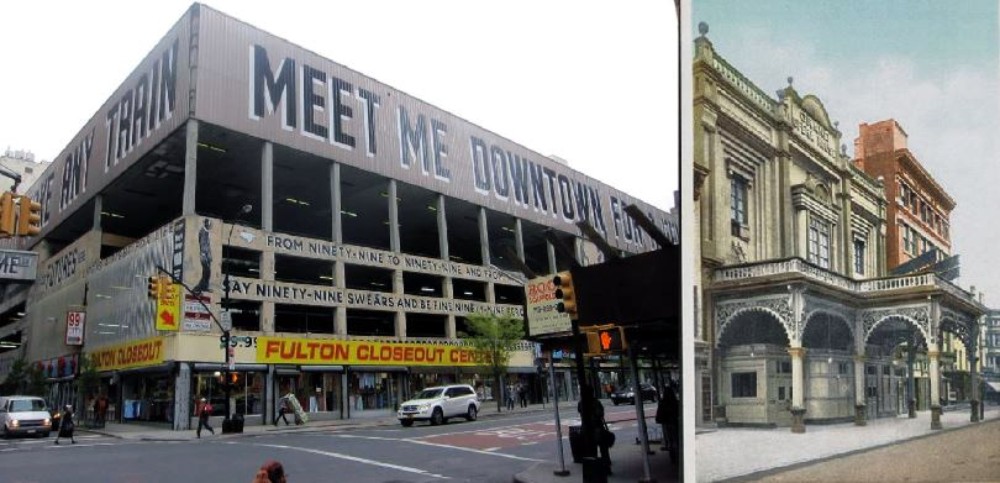
A look at Brooklyn, then and now.
Many of the grand store buildings built during the height of Downtown Brooklyn’s days as a pre-eminent shopping mecca are still with us. The Offerman Building, the buildings of Abraham & Straus, Namm’s, Loeser’s, Woolworth’s and Oppenheim & Collins still stand, even though all are now inhabited by new stores and businesses.
But if you look at old maps and photographs of the Fulton Street corridor, between Court Street and Flatbush Avenue, there’s one category of businesses that is totally gone: the theaters.
The only remaining vestiges of Brooklyn’s large theater district are those around and including the Brooklyn Academy of Music — but in the hundred years between the end of the Civil War through the 1960s, they were scattered along Fulton Street and its nearby side streets.
Some were later movie theaters, like the Albee, the Duffield, the Fox and Loews, but a fair number were legitimate stage theaters. One of the finest of these long-gone theaters was the Grand Opera House.
It was located at 18 Elm Place, a small one-block street cut between Fulton and Livingston streets, midway between Hoyt and Bond streets.
By the time the Grand Opera House was constructed in 1881, Fulton Street was still a street of smaller brownstone storefront shops. Livingston Street was primarily residential, as was Elm Place. The 1887 map shows a row house group across the street from the theater.
The large building next door belonged to A.I. Namm, a large dry-goods emporium selling draperies, fabric, trim, rugs and window shades, and behind the theater, on Hoyt Street, was a large livery stable.
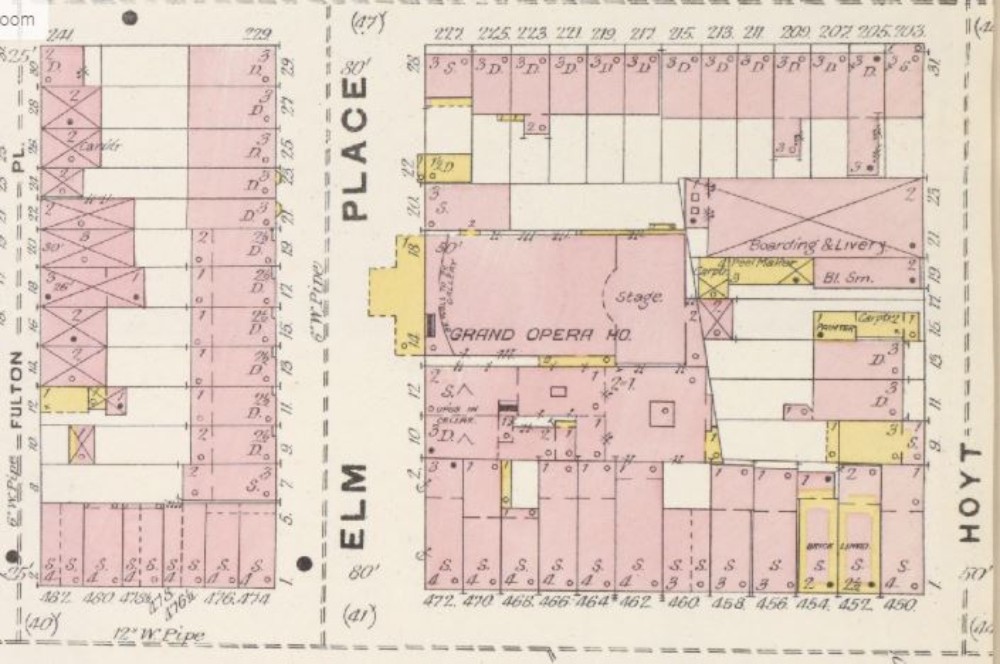
1887 map via New York Public Library
The Grand Opera House
The opera house was built on the ruins of a church, a fact some might find ironic. This was the location of the Elm St. Congregational Church, which burned down in 1880, leaving only the front wall standing.
The property was purchased by a local businessman named Benjamin Baker along with two actors, Hugo Fay and Billy Barry.
They kept the front façade, with its Palladian window, and added the decorative elements below. They extended the façade to a height of 80 feet with the addition of a heavy cornice bearing the name of the theater and the 1881 date of its completion.
The theater was 140 feet long and 65 feet wide. Inside, patrons were greeted by a handsome lobby with a ticket window and a ladies’ parlor and restroom on the right.
Because deadly theater fires were quite frequent and several such disasters had occurred in Brooklyn, the construction was fireproof and there were ample fire exits in the building, according to a contemporary article in the Eagle.
The theater was heated by a gas boiler, and when it opened it was lit by gas chandeliers and sconces. The house had a capacity for 2,000 people, with 600 in the orchestra, 500 in the balcony, 800 in the gallery above and 100 box seats.
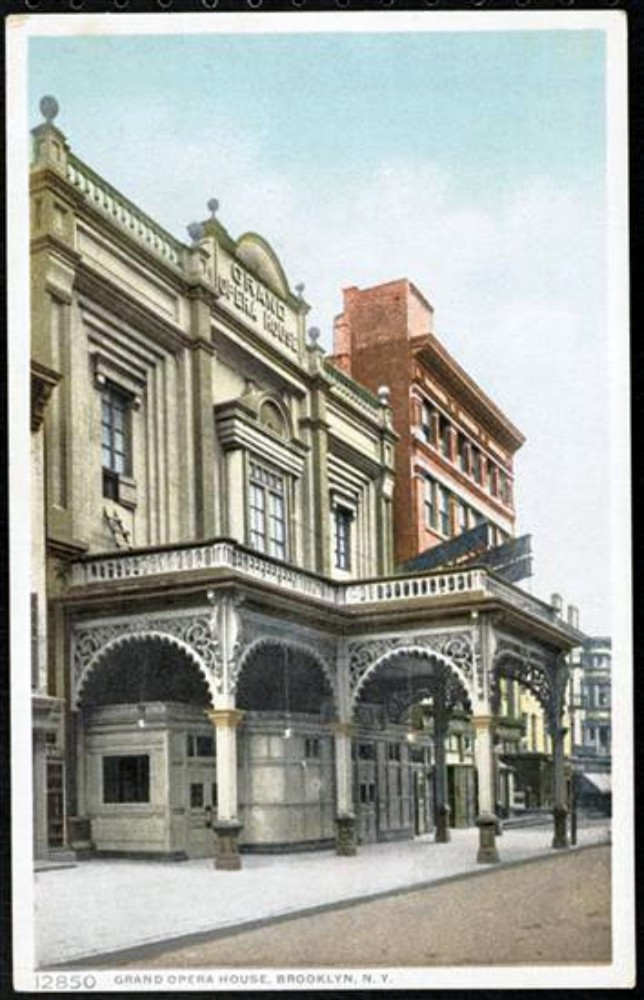
Postcard via eBay
The Grand Opera House was never actually an opera house, but rather a theater featuring popular fare. Its first performance was a farce called Muldoon’s Picnic, starring its owners, Irish comedic actors Hugo Fay and Billy Barry.
A year later, they sold the theater to Hyde & Behman, one of NYC’s biggest theater owners and impresarios of the day. They announced to the public that it would henceforth operate as a “first-class theater.”
Over the next 20 years, the theater changed managers and owners several times, always being passed among the largest theater owners in New York. The plays were still popular melodramas, farces and comedies.
In 1902, the owners did some renovations, getting ready to reopen with a new play called Morocco Bound. They had a risqué new curtain constructed, in which the center panel displayed semi-nude female figures surrounded by cupids.
This was in addition to removing some of the glitz and gilt that had been applied liberally by the former owners, and replacing it with mahogany woodwork. The theater was described as quite classy, and not garish.
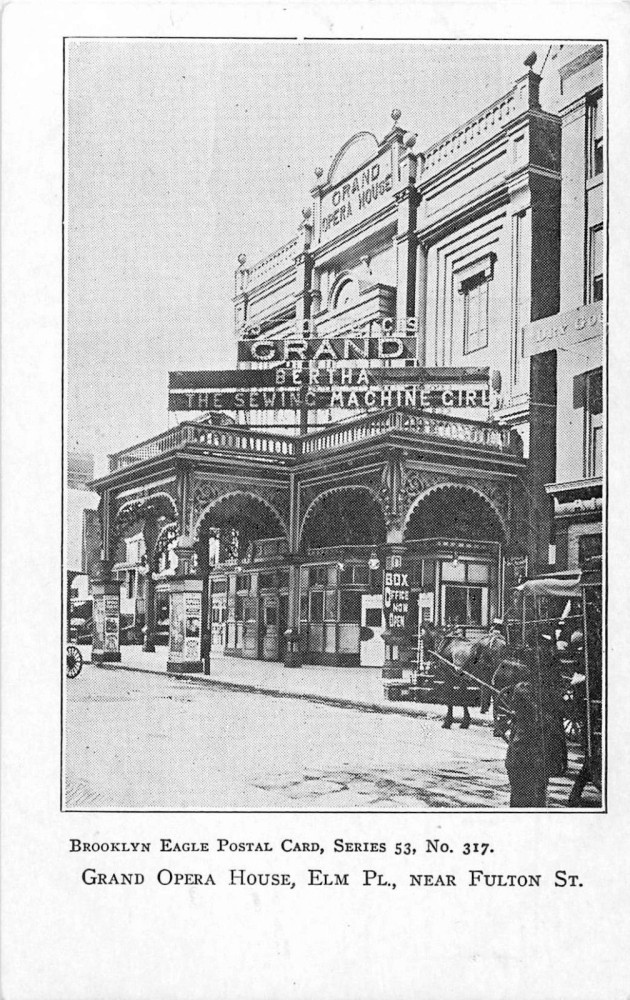
Postcard via eBay
In 1908, the Schubert Organization purchased the theater, putting itself in direct competition with the New Montauk Theater nearby. The theater business community was poised to watch the battle.
It wasn’t much of a war. Neither theater was doing all that well. In the coming decade, there would be more changes in management, resident theater companies and the kind of plays being offered.
By 1914 they were advertising a new curtain, sans nudes, and advertising the theater as a place where mothers could bring their babies. Matrons would be on hand to babysit in a special playroom while the parents went to see a play.
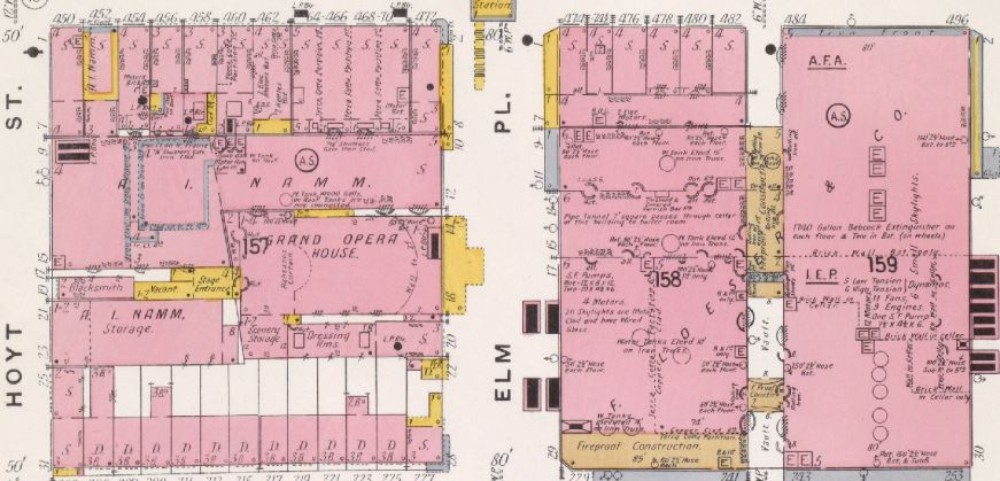
1904 map via New York Public Library
The Beginning of the End
They also installed a new reception room for women with writing tables, telephones and attendants. But catering to women didn’t bring enough business, and by 1917 the theater made one last attempt to reinvent itself by offering stock-company runs of previously popular Broadway shows.
That didn’t work, and neither did running movies. The theater closed in 1918. A year later, the building was sold to A.I Namm, the department store next door.
In the previous 30 years, Namm’s had grown into one of Brooklyn’s larger department stores and had expanded beyond this location. It was now a block deep, with a store on Fulton Street that expanded back into an enormous space on Hoyt Street.
By 1921, they owned most of the block of Fulton Street, between Elm Place and Hoyt Street. In 1924, they tore down all of the separate buildings they owned and built a massive flagship store that rounded the corner of Hoyt and Fulton streets. A similar annex was added in 1928. Those buildings are still standing, now landmarked.
The Grand Opera House was torn down at this time to create warehouse space for Namm’s, which by this time was the third-largest cash department store in the United States. In 1952, Namm’s purchased the failing Frederick Loeser & Co, the massive department store which can be seen in the 1904 map, on the other side of Elm Place.
The combined company then decided to concentrate on the suburbs and closed down the Brooklyn flagship store. In 1957, the Namm’s complex was sold to Federated Stores, which owned Abraham & Straus, across Hoyt Street.
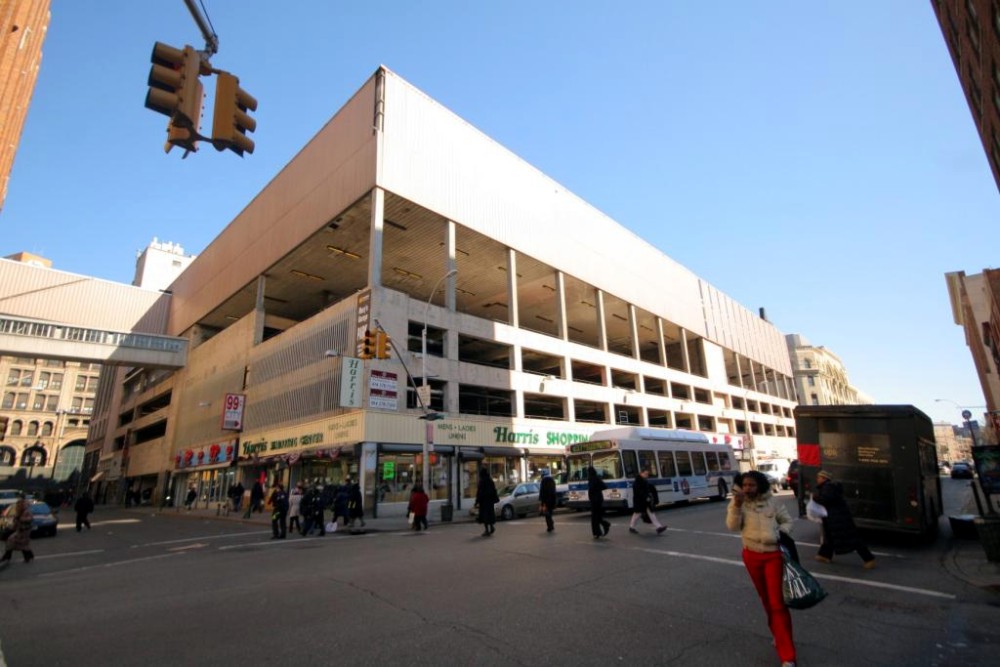
2007 photo by Scott Bintner for PropertyShark
Federated kept the 1924 and ’28 Namm’s flagship buildings but tore down everything else, including the buildings that had replaced the Grand Opera House. In 1958, they built the enormous 600-car parking garage that stands there now.
That garage has been standing much longer than the theater — 57 years. Go figure. This incredibly valuable real estate will not be a parking garage too much longer.
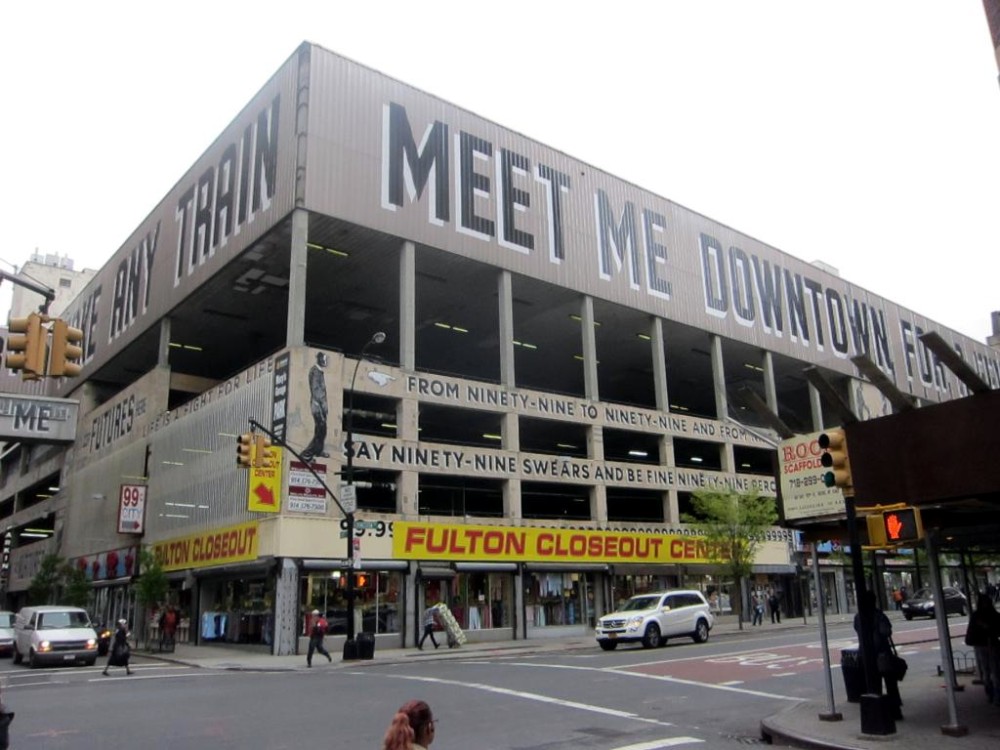
Photo by Nick Strini for PropertyShark
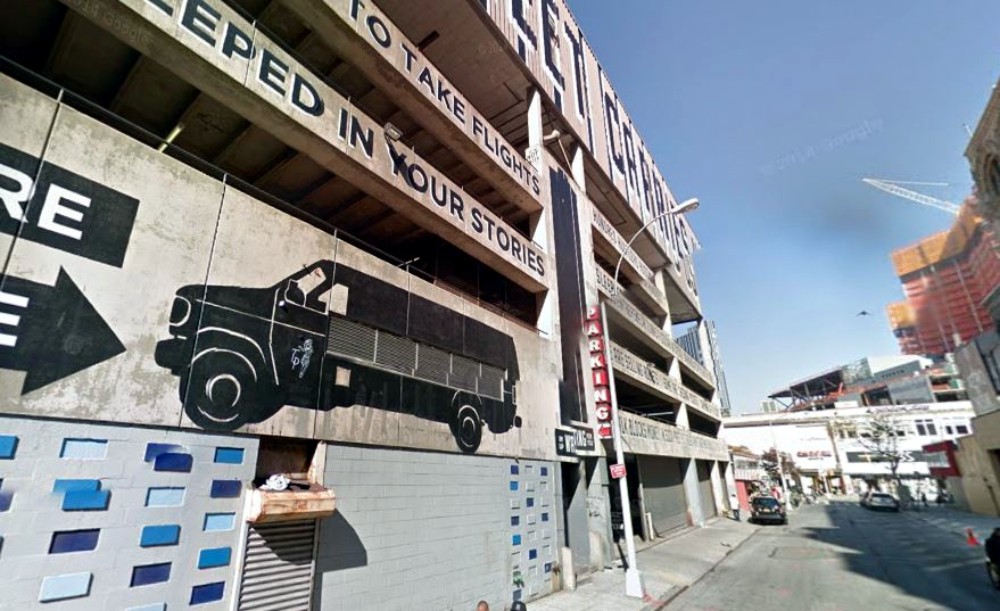
Site of the Grand Opera House via Google Maps
Related Stories
Building of the Day: 356 Fulton Street, a Downtown Mid-Century Modern Bank
Past and Present: The Evolution of 265 Livingston Street in Downtown Brooklyn
Past and Present: The Corner of Red Hook Lane and Livingston Street, Downtown

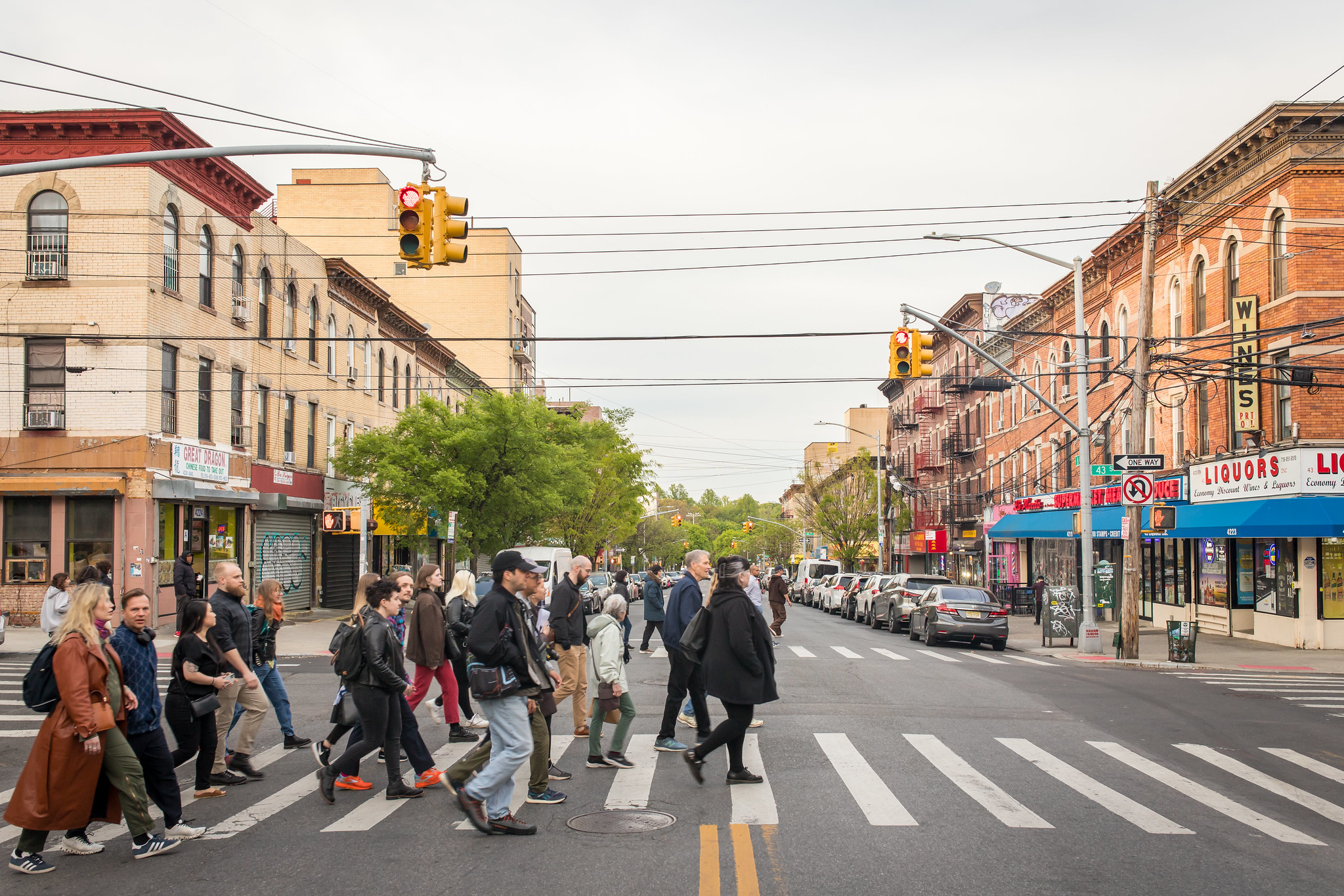

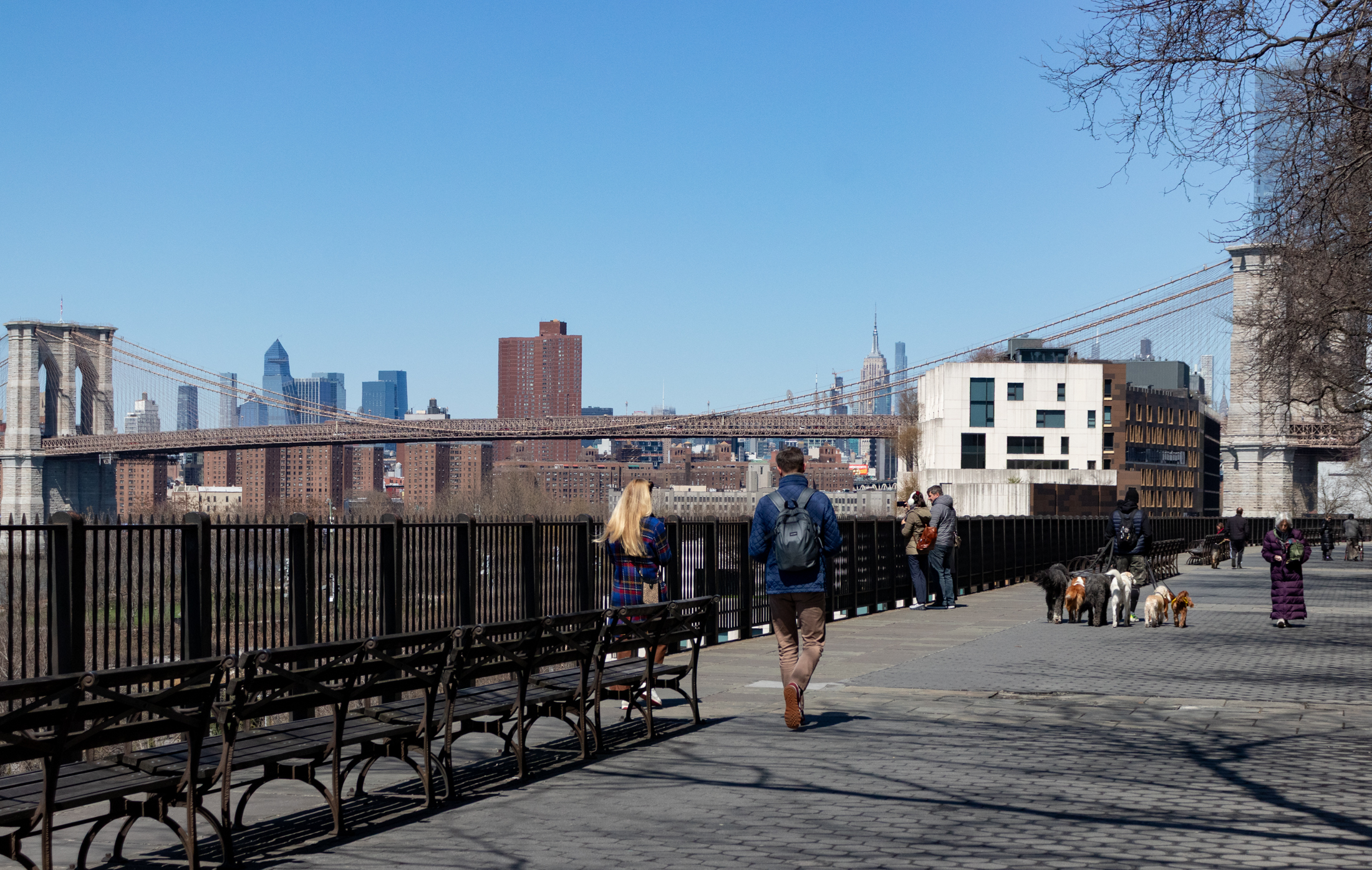

What's Your Take? Leave a Comment